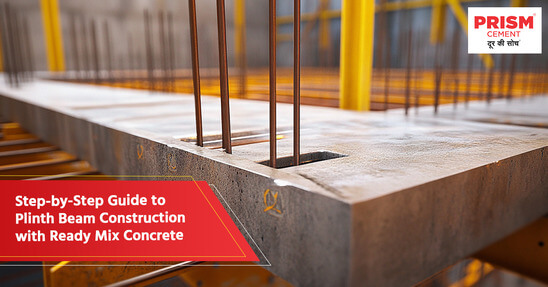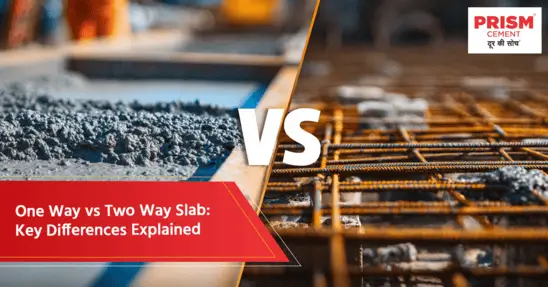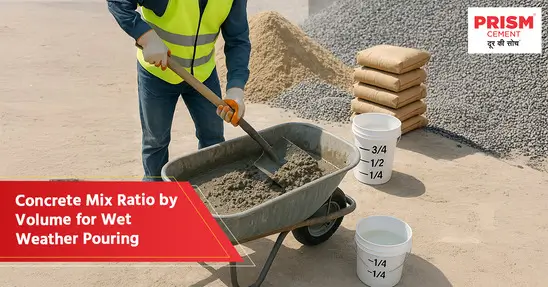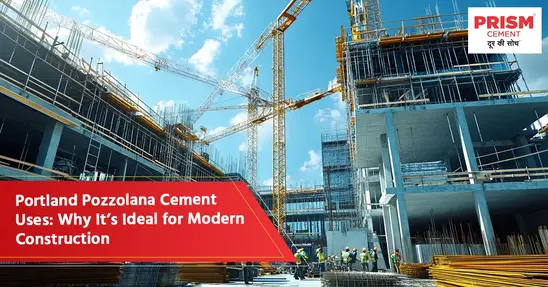In modern construction, structural stability is paramount, and the plinth beam plays a vital role in ensuring durability and strength in any building. Whether you’re an architect, engineer or a homeowner, understanding the steps and importance of plinth beam construction is crucial for creating a solid foundation.
In this blog, we’ll explore everything you need to know about plinth beams, their role, applications and the best practices to follow for reliable results.
Everything You Need to Know About Plinth Beam Construction
A plinth beam is a horizontal structural member that acts as a base for the walls of a building. Positioned at ground level, it distributes the load of the walls and transfers it evenly to the foundation. But it doesn’t just stop there; the plinth beam also prevents cracks, adds stability to uneven soil conditions and protects the structure from moisture ingress.
What is a Plinth Beam and What Role Does It Play in a Building?
A plinth beam is a type of construction beam designed to prevent wall cracking due to foundation movement or uneven settling. Often used as a tie beam, it helps link columns and beams while ensuring uniform load distribution.
Importance of a Plinth Beam in a Building:
- Provides horizontal support to stabilize walls
- Protects walls from soil movement or swelling
- Enhances durability by resisting moisture and dampness
- Acts as a critical structural element in the slab design process
Key Applications of Plinth Beams
Plinth beams have several applications that make them an indispensable part of construction:
- Load Distribution: Distributes wall loads evenly across the foundation
- Seismic Resistance: Acts as a tie beam to strengthen the structure against seismic forces
- Moisture Protection: Shields walls from capillary action and water ingress
- Foundation Stability: Prevents differential settlement of the structure
Getting Ready for Plinth Beam Construction
Preparation is key to ensuring the longevity of the plinth beam. Follow these steps to get started:
Site Survey and Soil Testing
Conducting a thorough site survey and soil test is essential to evaluate load-bearing capacity and identify potential challenges. The data collected will guide the design and construction process.
Design and Planning
Incorporate a well-thought-out slab design to ensure compatibility with the columns and beams. Factor in load distribution, soil conditions and seismic resistance during this phase.
Material Selection
Choosing high-quality materials is critical for the performance of the plinth beam. Concrete and cement with superior water-repellent properties, such as Prism Champion All Weather Cement, can ensure strength and durability.
Shuttering and Reinforcement Placement
Use proper shuttering to define the shape of the type of column and construction beams. Accurately place reinforcement bars to enhance the tensile strength of the structure.
Concrete Mixing and Compacting
Using ready mix concrete for plinth beam construction offers precision and consistency. Proper compaction eliminates air pockets, improving the overall strength and density of the structure. Opt for high-performance cement like Prism Champion to achieve these results effortlessly.
How to Build a Plinth Beam?
Building a plinth beam involves several critical steps:
- Excavate the foundation trench to the desired depth
- Place reinforcement bars as per the design
- Set up shuttering and ensure it’s secure
- Pour the ready-mixed concrete into the formwork
- Compact the concrete to eliminate air voids
- Cure the structure for a specified duration to ensure strength development
Quality Inspections During Plinth Beam Construction
Regular quality checks ensure the durability and stability of the plinth beam:
- Verify that materials meet design specifications
- Check alignment and reinforcement placement
- Ensure proper curing for sufficient hydration of concrete and cement
Concluding the Process
Once the curing process is complete, remove the shuttering and inspect the structure for any visible defects. Address issues promptly to prevent long-term weaknesses.
FAQs
Q1. Which cement is best for plinth beams?
Answer: Cement with water-repellent and high-strength properties, like Prism Champion All Weather Cement, is ideal for plinth beams.
Q2. How much cement is required for a plinth beam?
Answer: The requirement depends on the dimensions, but it is calculated as part of the concrete mix ratio.
Q3. What should be the size of a plinth beam?
Answer: The standard size is typically 9" x 12", but it varies based on structural requirements.
Q4. Which cement is best for beams?
Answer: A cement that offers high compressive strength and durability, such as Prism Champion Duratech Cement, works best for beams.
Q5. What is the best material for a plinth?
Answer: A combination of high-grade concrete and cement, reinforced with steel bars, ensures optimal performance.




